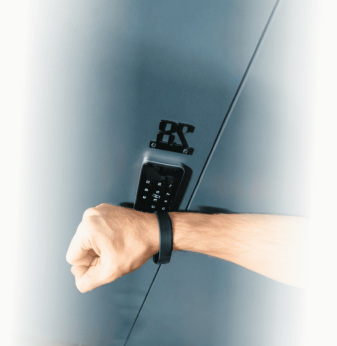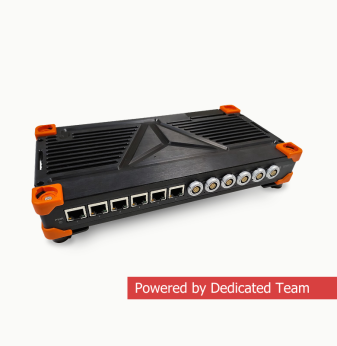Your Virtual Doctor at Home: Technology in the Disease Management and Rehabilitation
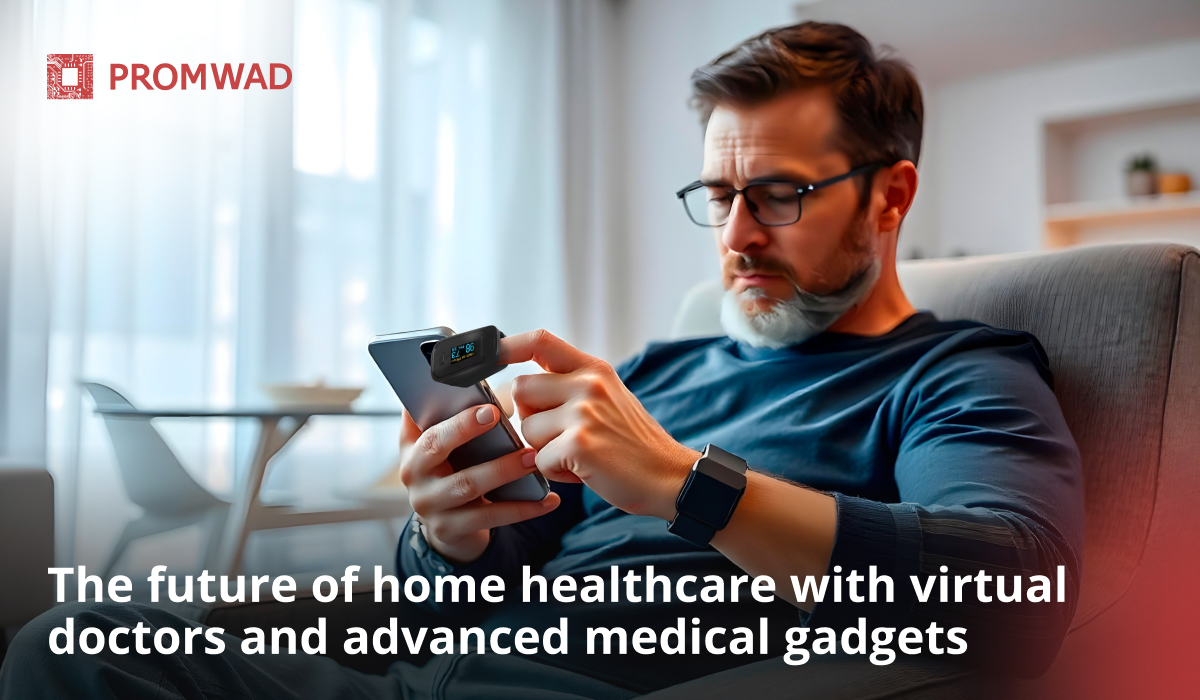

Сonvenience and accessibility are of prime importance in any field, including medicine. The growth of telemedicine and demand for home health devices has multiplied in recent years as the global healthcare system faces a shortage of staff and growing patient needs. The Сovid-19 pandemic has highlighted vulnerabilities in many government systems, and technology is naturally moving towards accessibility for the common person.
In this article, we will explore how connected health devices for chronic disease management, rehabilitation and self-diagnosis at home can change the medicine industry (and why it's important to be ahead now!).
If you plan to produce remote monitoring healthcare devices or have similar ideas, we can manage the entire development cycle – from concept to production – ensuring fast and efficient delivery.
Table of contents
Remote patient monitoring systems
Why is it so important?
When we delve into the intricacies of home healthcare monitoring systems, it is easy to see why this area is becoming so critical. Western Europe in general, and the DACH region in particular, face unique healthcare challenges. For example, in some parts of Germany there is a problem of long waiting times for medical appointments due to a shortage of staff, especially in rural areas.
The lack of professionals, exacerbated by an ageing population and the increasing prevalence of chronic diseases, has led many people to seek alternatives to traditional healthcare providers.
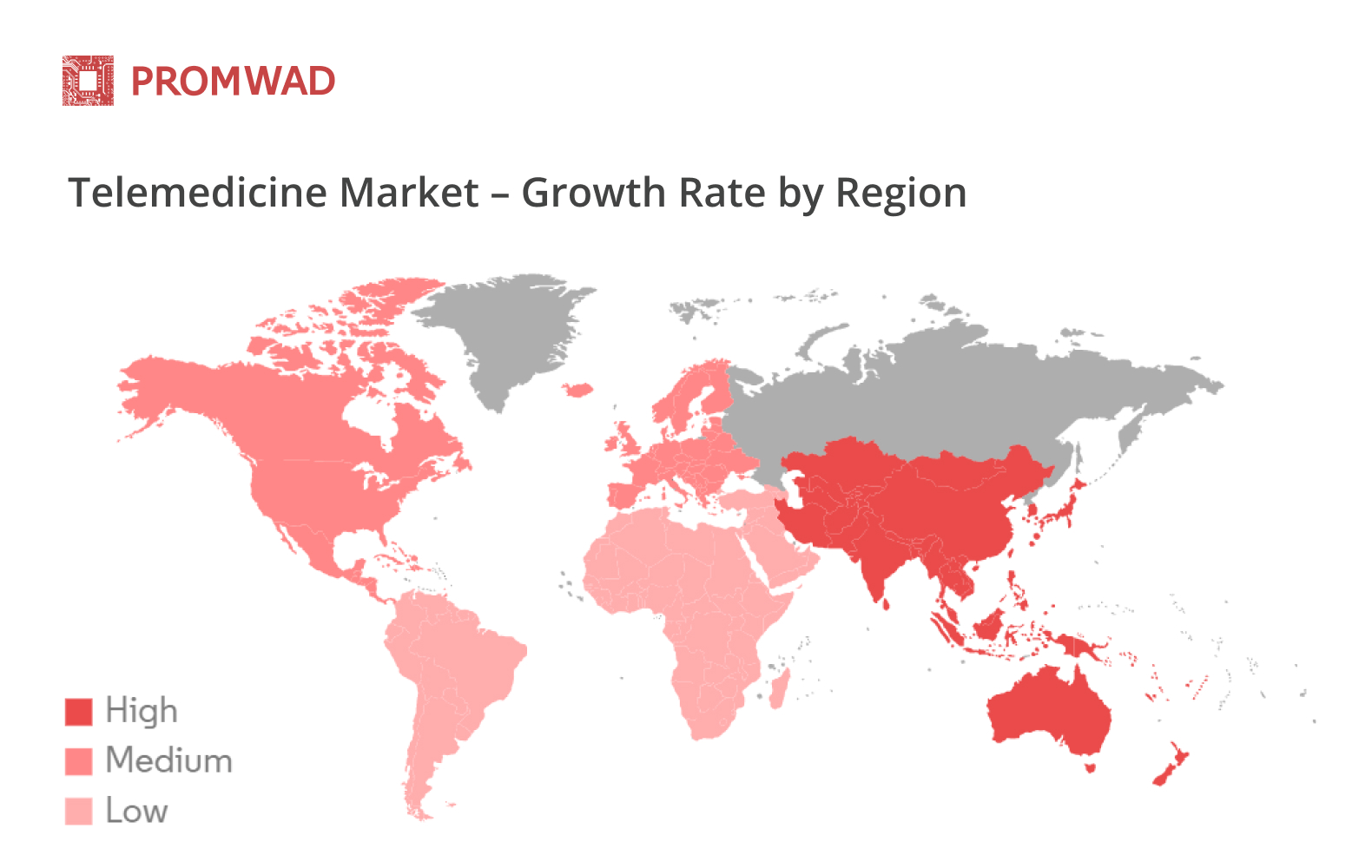
The fastest growth in the telemedicine market is demonstrated by Asian countries (e.g., China and India)
Going to the doctor can also be risky, especially when infectious diseases come in waves at regular intervals. Many people are reluctant to visit hospitals for minor ailments for fear of contracting serious infections.
This is where the opportunity for innovative electronics lies – in creating devices that empower people to actively manage their health, while reducing the burden on healthcare systems.
Devices for chronic diseases
Chronic diseases such as diabetes, hypertension and asthma require constant management and monitoring. Traditional methods of care often require regular visits to the doctor, which can be both time-consuming and stressful. Fortunately, a range of electronic devices can help manage these conditions at home. There is particular potential in systems that combine one or more devices with a mobile and web application.
Glucose monitors
For those living with diabetes, continuous glucose monitors (CGMs) have changed the way patients track their blood sugar levels. These devices provide real-time data to make decisions about diet and medication. Advanced CGMs now come equipped with Bluetooth technology for data sharing with medical staff.
Blood pressure monitors
Hypertension is often dubbed the "silent killer" due to its lack of noticeable symptoms until it's too late. Automatic blood pressure monitors allow patients to keep tabs on their cardiovascular health from home. These devices now feature digital displays, memory functions, and connectivity options to share data.
Asthma management devices
Asthma patients benefit from portable peak flow meters that measure airflow, alerting users to deteriorating lung function. These devices can measure lung capacity and provide practical recommendations based on the data collected. Through the integration of mobile apps, users can receive medication reminders and access educational resources to effectively manage their condition.
Heart rate and ECG monitors
These wearable devices monitor heart rate and heart rhythm for abnormalities such as atrial fibrillation. They are convenient for patients with arrhythmias, coronary artery disease or those recovering from a heart attack.
They use electrodes or patches that stick to the skin and transmit real-time data to a connected mobile app or cloud platform for analysis. Advanced versions provide a compact electrocardiogram recording that can be shared.
Sleep apnoea monitors
Sleep apnoea monitors include wearable sensors or bedside devices that measure oxygen saturation, breathing patterns and body movements during sleep. Many are equipped with machine learning algorithms to detect breathing disorders and provide personalised reports.
In addition to patients with suspected or diagnosed sleep apnoea and those suffering from chronic snoring, fatigue or restless sleep, these devices are also useful for monitoring patients undergoing CPAP (continuous positive airway pressure) therapy.
Digital hearing aids
Advanced hearing aids with AI technology and connectivity enhance sound and reduce background noise. They can be customised through a smartphone app for different conditions and include features such as tinnitus masking or real-time hearing health tracking.
They are suitable for people with mild to severe hearing loss, including the elderly and those exposed to high levels of noise in everyday life. These devices are also useful for those with tinnitus or auditory processing disorders.
Wearable pain management devices
These devices use TENS (transcutaneous electrical nerve stimulation) or PEMF (pulsed electromagnetic field) therapy to relieve chronic pain by stimulating nerves or promoting tissue repair. They are worn on painful areas and controlled via a mobile app for personalised therapy sessions. It is useful for people with chronic pain conditions (arthritis, fibromyalgia, low back pain), athletes after injuries, and post-operative patients.
Remote patient monitoring systems
Comprehensive IoT based remote patient health monitoring system can track multiple health parameters and send alerts to patients and medical staff when abnormalities are detected. By centralising data from various devices, peolple can receive holistic care without frequent clinic visits.
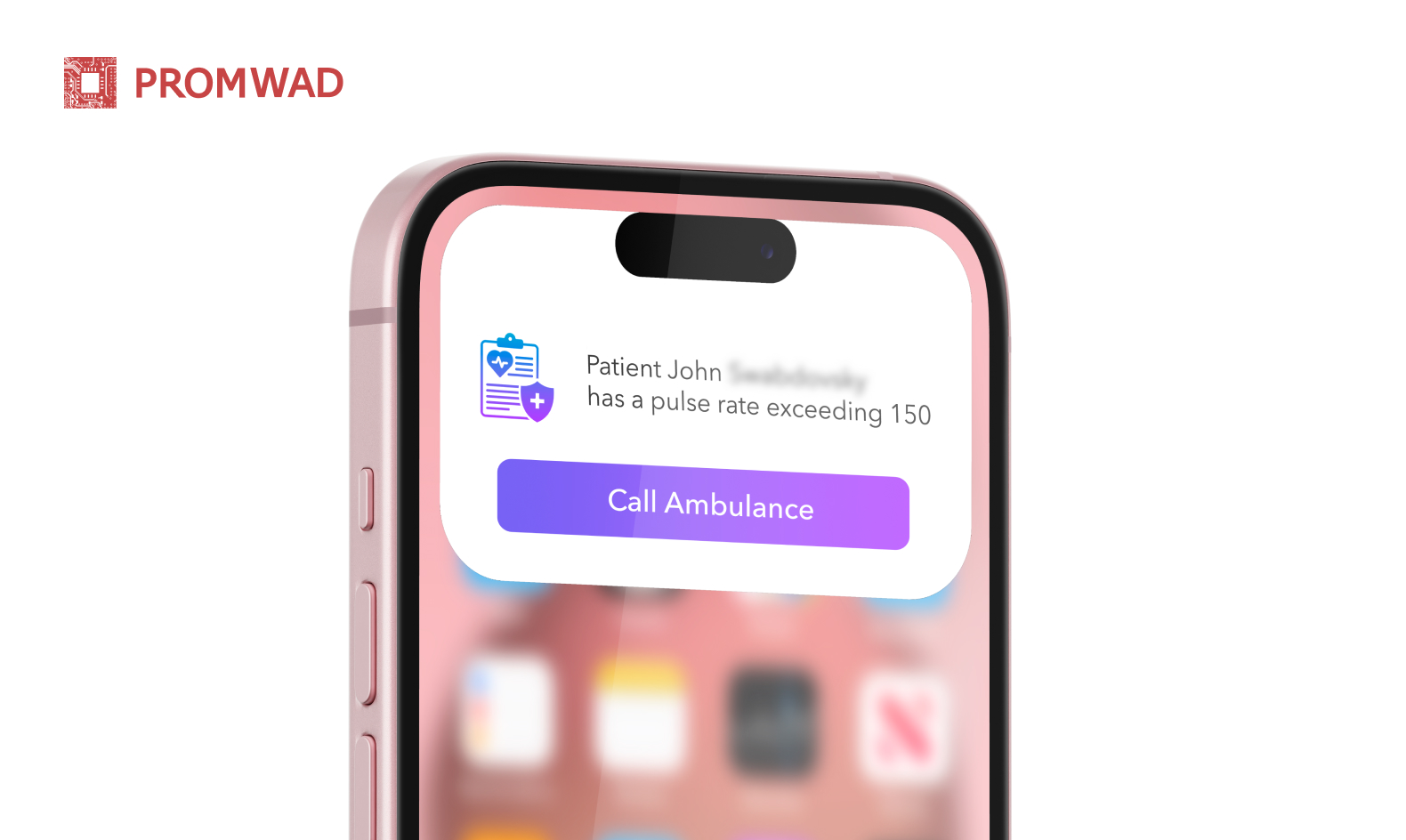
Application interface for real-time health monitoring and emergency response
Remote patient monitoring (RPM) systems are end-to-end solutions designed to track patient health indicators outside of the traditional clinical setting. These systems typically consist of three main components:
- Devices. Wearable or standalone devices such as glucose monitors, blood pressure cuffs, pulse oximeters, ECG trackers and even medial alert button that collect real-time health data.
- Data transfer tools. Bluetooth, Wi-Fi or cellular networks for transfer of collected data to medical professionals.
- Сentralised platforms. Cloud-based or on-premises software platforms that aggregate, analyse and present data in a format accessible to doctors, often integrating artificial intelligence to provide actionable insights.
Remote patient monitoring IoT systems are particularly useful in the management of chronic diseases such as diabetes, hypertension and cardiovascular disease, where regular monitoring is required. They are also important in post-operative care by reducing the need for frequent in-person visits, allowing patients to recover under constant remote monitoring.
In addition, these systems can improve care for elderly patients or those living in rural areas, bridging the gap between limited medical resources and timely intervention. During pandemics or outbreaks of infectious diseases, RPM systems help minimise hospital visits and reduce the risk of infection for both patients and staff. They also support telemedicine initiatives, creating a more integrated and efficient approach to patient care.
IoT based remote health monitoring systems enable healthcare providers to improve patient outcomes, reduce operational costs and provide proactive, personalised care. But are there drawbacks?
While remote monitoring devices in healthcare offer many benefits, their implementation requires an investment in staff training. Healthcare professionals need to be familiar with operating monitoring equipment, interpreting data and responding to alerts or anomalies detected by the system. Likewise, patients, particularly elderly individuals, children, or those unfamiliar with technology, may find these devices challenging to use.
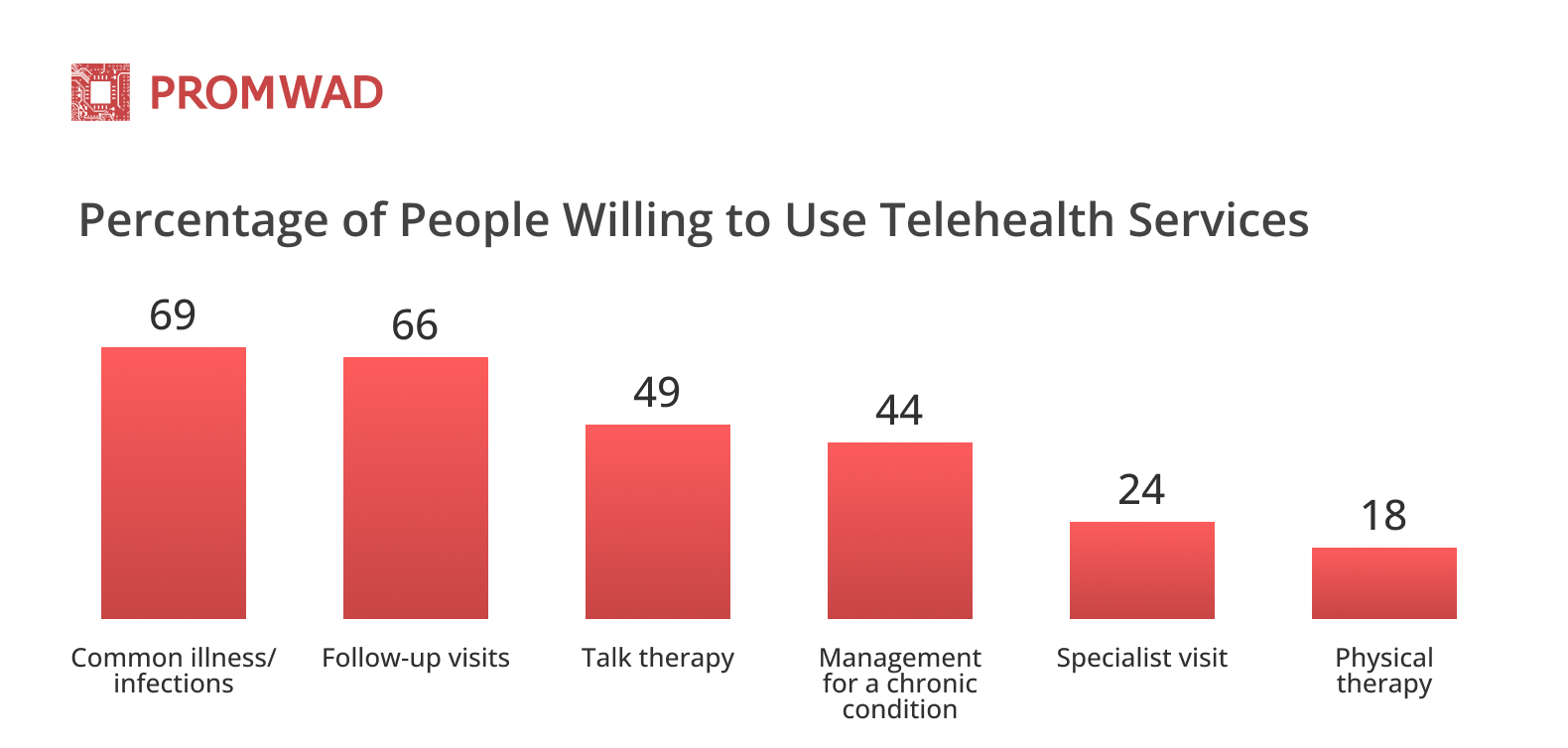
Telemedicine is most prevalent for common health problems and follow-up care
To overcome these barriers, it is important for remote monitoring systems to feature user-friendly designs that are intuitive, easy to put on, and simple to operate. Reliable technical support and straightforward interfaces can significantly reduce difficulties for both staff and patients, ensuring that RPM workflows integrate seamlessly into existing practices and are accessible to everyone.
Devices for rehabilitation
Rehabilitation devices are changing how patients recover from injury, offering the convenience of home therapy while maintaining the effectiveness of traditional offline activities.
Whether for physiotherapy, neurological rehabilitation or post-operative recovery, these therapy gadgets empower patients to take control of their progress, making rehabilitation more accessible, future-proof and easily integrated into everyday life.
Modern rehabilitation devices are a combination of advanced technologies:
- Sensors. Force plates, accelerometers, gyroscopes, and strain sensors track movement, balance, and applied forces for correct and efficient exercises.
- Artificial Intelligence (AI) analyses data collected by sensors. It identifies patterns, monitors progress, and provides real-time feedback.
- Connectivity. Integration with mobile and web applications enables communication between the device and the user. Connectivity makes exercises interactive, so patients can track progress in real-time, and data is shared instantly with medical staff.
- Cloud technology. Cloud-based health monitoring systems with IoT make rehabilitation more accessible and guided. Healthcare providers can track patients' progress, adjust treatment plans, and make recommendations without the need for frequent in-person visits.
- Mobile and web applications serve as intuitive user interfaces, guiding patients step-by-step through their exercises. They provide visual cues, instructional videos, and detailed progress reports to keep patients informed and engaged.
- Many platforms include gamified elements such as interactive challenges, rewards, and progress milestones to boost motivation. These features make therapy enjoyable and encourage patients to stick to their exercise regimens.
Digital physical therapy platforms
Digital physiotherapy platforms allow patients to perform exercises remotely under the virtual guidance of a doctor or therapist. These platforms use motion recognition technologies (sensors, cameras and artificial intelligence algorithms) to track movements to ensure proper exercise, reduce the risk of injury and improve recovery outcomes.
Patients receive feedback, real-time adjustments and progress tracking.
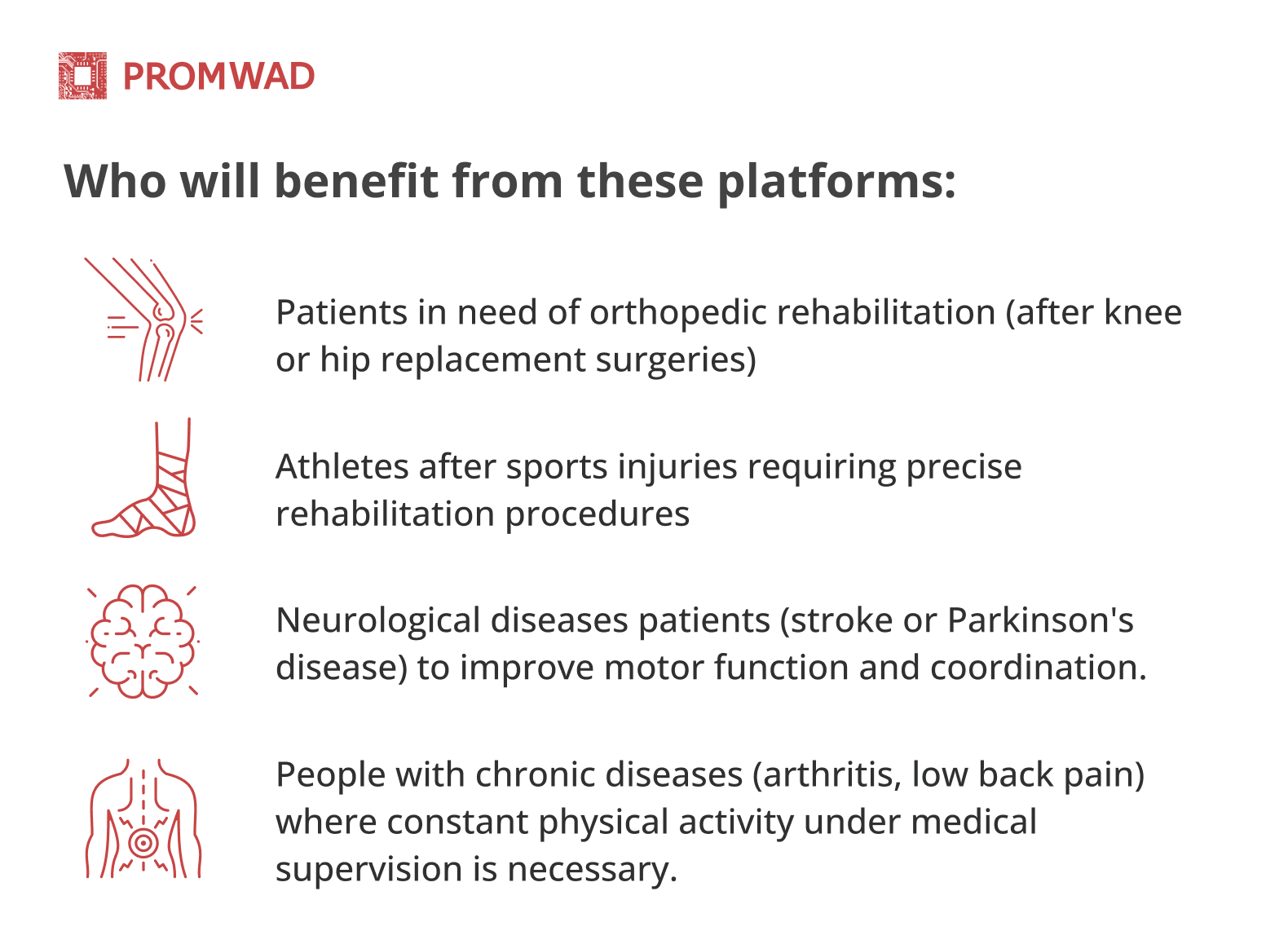
Resistance training equipment
Resistance training helps people to regain strength, improve mobility and functionality. Traditional exercise equipment such as bands and weights can be enhanced with smart technology, which makes them more effective for rehabilitation and general fitness.
Smart resistance bands and weights are equipped with sensors that track strength, amplitude of movement, and number of repetitions. These physical therapy gadgets can connect to mobile apps or digital platforms via Bluetooth for instant feedback and detailed performance analytics. By tracking metrics such as muscle engagement and exercise intensity, these tools ensure accurate adherence to rehabilitation protocols.
Smart resistance trainers are invaluable for recovering from injury or surgery (ACL reconstruction, shoulder injury or joint replacement), for working specific muscle groups, restoring strength to weakened areas and correcting muscle imbalances, and for managing chronic conditions (arthritis or osteoporosis) where controlled strength training is vital to prevent further complications.
Balance and stability devices
For people recovering from strokes, surgery or other conditions affecting mobility, regaining balance and stability is a crucial part of the rehabilitation process.
Balance and stability therapeutic gadgets such as smart balance boards and simulators are designed to enhance recovery through interactive and engaging exercises to strengthen core muscles, improve co-ordination and motor skills.
Smart balancing devices use sensors and connectivity technology to track the user's movements and provide feedback. For example, balance boards are equipped with force sensors or gyroscopes to measure weight distribution and stability. The data can be transmitted to a mobile app or screen where users can participate in game-like exercises, such as following visual cues or maintaining balance in virtual scenarios.
Virtual reality & telehealth in rehabilitation
Virtual reality and telemedicine are making therapy more accessible, engaging and cost-effective for both patients and healthcare systems. These technologies allow patients to receive personalised care from the comfort of their own homes and reduce the need for frequent in-person visits while maintaining high quality care.
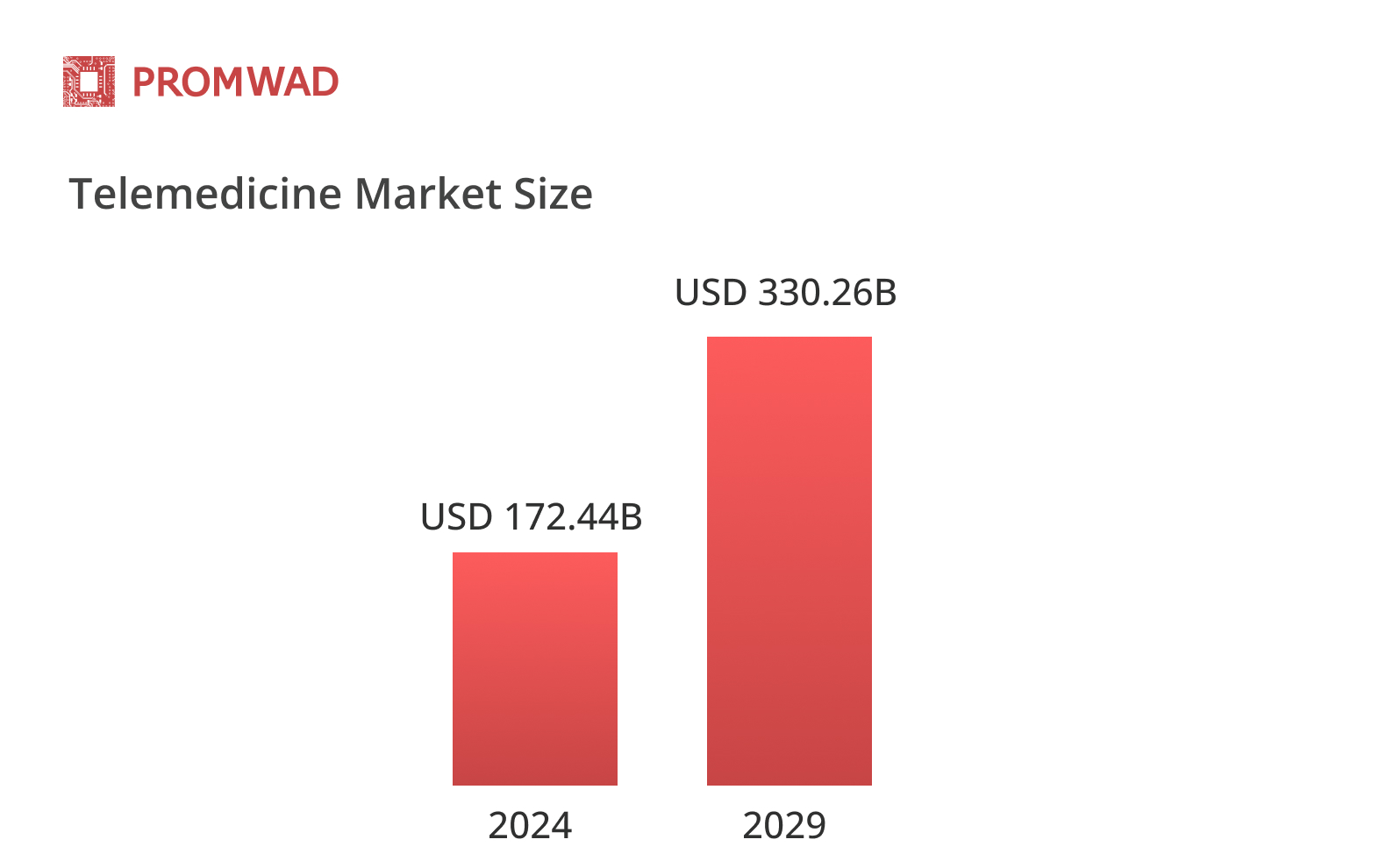
The projected telemedicine market size is USD 330.26 billion
VR creates immersive environments that mimic real-life scenarios, helping patients perform rehabilitation exercises in a controlled environment. For example, stroke patients can re-learn motor skills by interacting with virtual objects, and people recovering from surgery can safely practice motor patterns.
As we overcome the challenges associated with healthcare delivery, telemedicine is growing. Telemedicine is a lifeline for patients in remote areas or those who cannot access healthcare facilities due to various difficulties. Using electronic devices for self-monitoring and diagnosis, patients can interact with health care providers without the need for a face-to-face visit, reducing the risk of exposure to potential infections.
Telemedicine complements this system and allows therapists to monitor progress remotely, offer feedback and adjust treatment plans as needed. This reduces travelling time and makes it easier for patients with mobility issues or living in remote areas to access treatment.
There are also economic benefits to implementing VR and telemedicine in rehabilitation. For healthcare professionals, these technologies simplify workflow with remote consultations and monitoring. Virtual sessions reduce the need for physical infrastructure and equipment in clinical facilities, which reduces costs for providers. For patients, fewer clinic visits mean lower transport costs and less time away from work or daily responsibilities.
Self-examination in home medicine
Self-diagnosis is a sensitive topic, but with the right devices, patients can monitor their health and make informed decisions about seeking medical advice. The goal is not to replace doctors but to empower patients to understand their health better with the help of home care monitoring devices.
Home diagnostic kits
Home diagnostic kits for conditions such as urinary tract infections, cholesterol levels, pregnancy tests and home blood test kits are increasingly popular. The advent of digital technology has taken these tools to a new level of accuracy and user experience. By integrating hardware and software, digital diagnostic kits provide immediate, reliable results with actionable insights, right from the comfort of home.
Modern digital diagnostic kits typically combine a physical testing component, such as a strip or sensor, with a mobile or web application. For example, a urinary tract infection test might include a test strip that changes color upon detecting certain biomarkers. The user scans the strip using their smartphone camera, and an app analyses the results using AI algorithms within seconds.
These kits leverage biosensors to detect biomarkers specific to the condition being tested, such as glucose, ketones, or proteins. Designing compact, reliable devices with app integration opens doors to a growing market of health-conscious consumers.
Smart thermometers
Fever is often the first indicator of illness. Smart thermometers that sync with apps can provide insights into temperature trends and alerts for when to seek medical attention. This innovation is aimed at individual users in the home and at healthcare facilities when doctors need reliable data on patient health.
Smart thermometers use digital sensors to determine body temperature accurately. Readings are transmitted via Bluetooth or Wi-Fi to a connected mobile app, where users can view the data in an intuitive interface.
Many smart thermometers offer advanced features such as continuous monitoring, temperature rise alerts, and trend tracking over time. For example, parents can monitor their child's temperature throughout the night without disrupting their sleep, thanks to devices that directly update their smartphones.
Features such as multi-user profiles, integration with telemedicine platforms, and compatibility with other smart medical devices enhance their utility and appeal.
Symptom assessment tools
Mobile applications that guide users through symptom assessment can be important in self-diagnosis. These tools offer users structured symptom lists, using algorithms developed by experts to provide personalised recommendations and advice. By asking questions and processing responses in real-time, the tools generate potential insights into health conditions and next steps, such as self-care tips or recommendations to consult a professional.
Apps are often integrated with mobile features such as health tracking, geolocation and telemedicine services, allowing users to connect directly with doctors if needed. It is a convenient and confidential way to assess health status, reducing unnecessary doctor visits and ensuring timely medical intervention.
For healthcare professionals, symptom checkers can serve as a triage tool that helps to prioritise cases and optimise resources. The data collected can also contribute to a broader understanding of public health issues, such as identifying health trends or improving diagnostic accuracy over time.
Health monitoring apps
Comprehensive health monitoring apps can aggregate data from various devices and provide users with a holistic view of their health. Health monitoring apps combine data from a variety of devices (wearable devices, smart scales, blood pressure monitors, etc.) into a single, user-friendly platform.
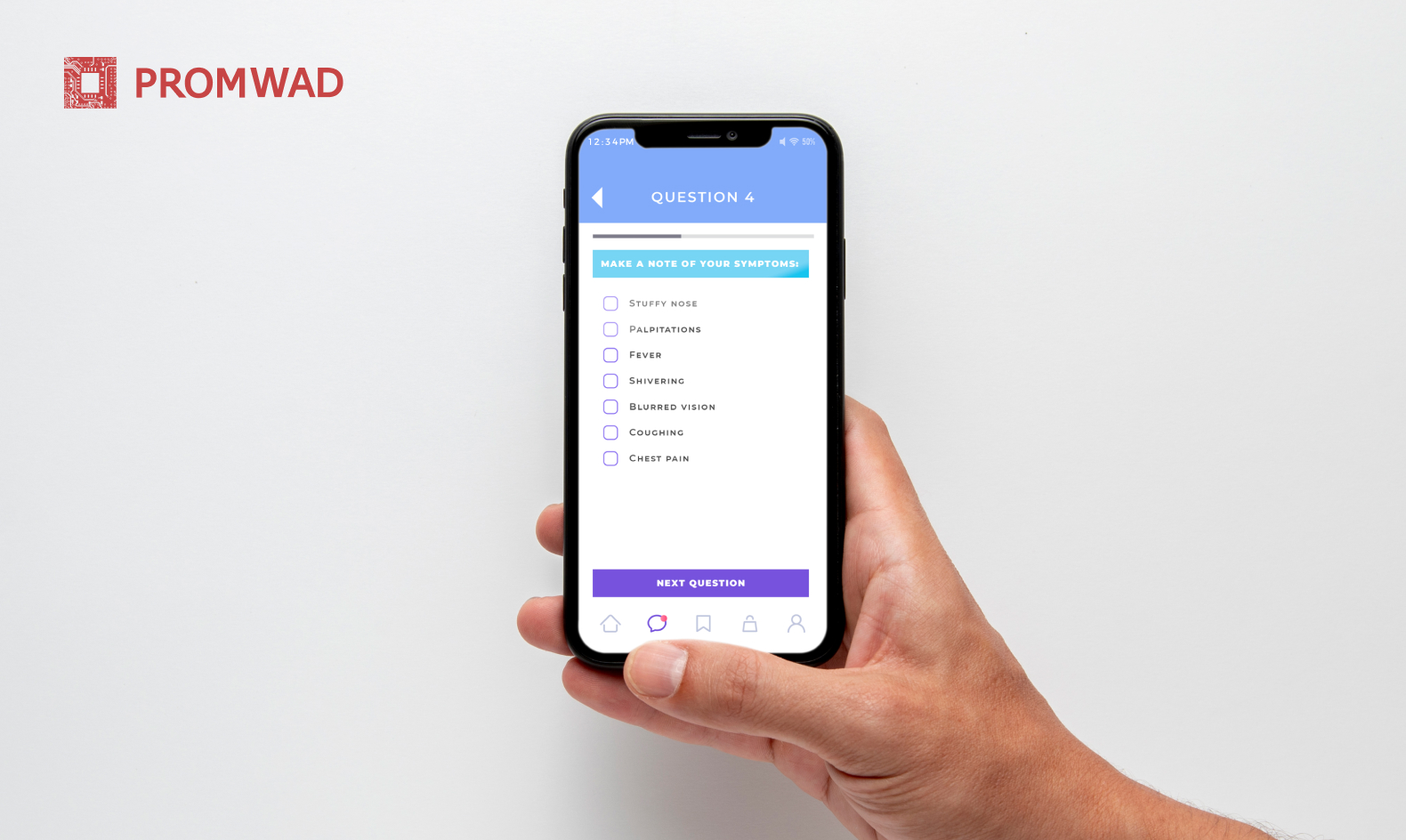
The interface of a remote health monitoring and symptom tracking application that can be used as part of a telemedicine service
These apps integrate with another devices using Bluetooth or Wi-Fi to collect data such as heart rate, sleep patterns, activity levels and more. It analyses this data to identify trends, highlight areas of concern and offer personalised recommendations. For those with chronic conditions, these tools can help track metrics such as blood sugar levels or oxygen saturation.
Personalised reminders and recommendations promote proactive health management, leading to improved outcomes. For healthcare professionals, aggregated data from these apps can provide a deeper insight into a patient's condition, aiding in diagnosis and treatment plans.
Data security and privacy
Healthcare-related technology development must prioritise data security and privacy. We use advanced cryptography and secure data transfer protocols to protect sensitive medical and personal information. We understand the responsibilities associated with handling medical data and are committed to creating solutions that patients can trust.
Promwad is a one-stop solution for health technology
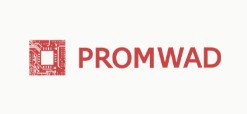
Navigating the complex landscape of home healthcare technology requires expertise and innovation. At Promwad we are ready to create solutions for chronic disease management, rehabilitation, and self-diagnosis. With a commitment to precision and user-friendliness, we can automate and digitise medical processes that were once cumbersome and inaccessible.
From developing custom hardware to creating intuitive software applications, our approach is holistic. Whether it’s designing a glucose monitor for diabetics or creating a telehealth platform for rehabilitation, our expertise spans the entire development process.
With our expertise in hardware design, sensor integration, and mobile app development, companies in the health tech space have an opportunity to shape the future of home diagnostics. By combining innovation with user-centric design, they can deliver solutions that redefine how individuals manage their health.
Case study
Health Monitoring Wearable Device and Ecosystem Design
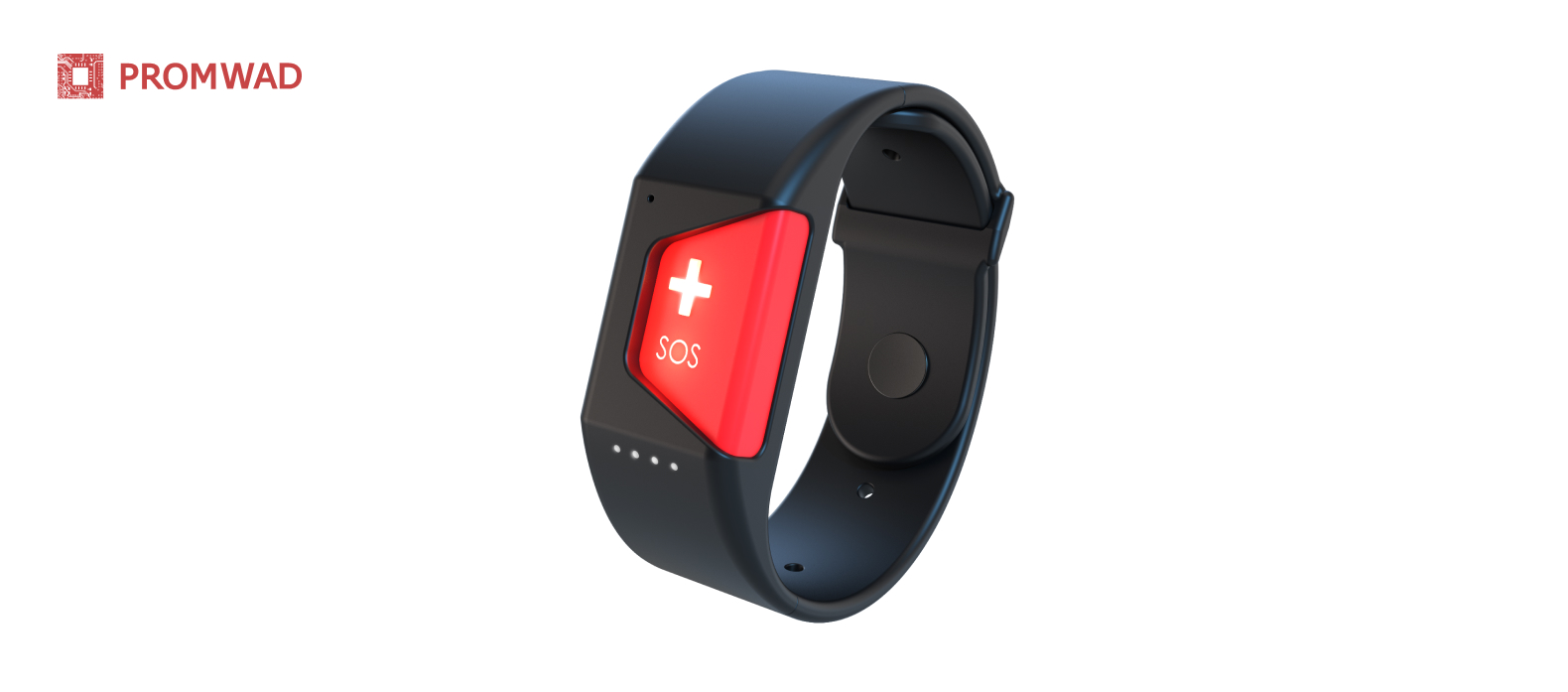
Promwad created a comprehensive health monitoring ecosystem consisting of a wristband, a cloud service, and mobile and desktop applications. The client, a manufacturer of wearable devices and smart home systems, faced fragmented market solutions that were expensive and difficult to integrate. They needed a secure, reliable, energy-efficient and EHR-compliant solution to accelerate their time to market.
By leveraging Promwad's expertise and end-to-end development capabilities, the client successfully launched a versatile product, increased its presence in both B2C and B2B markets, and significantly reduced its time to market.
Want to develop the next big thing in home medical devices?
Our Case Studies in Industrial Design

